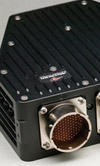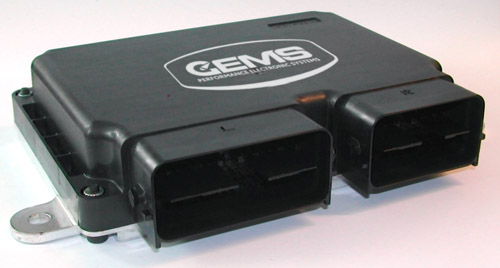Engine electronics
 Although an activity that is supposed to ‘improve the breed,’ motorsport has usually lagged behind road cars on engine management technology. There was a time when factory electronic injection systems on production-based cars were junked in favour of carburettors during preparation for racing. Even now, most of the capabilities of modern systems including traction and stability control are expressly forbidden by most rulebooks.To be fair, motor manufacturers have never had any interest in making it easy for individuals and small concerns to tinker with engine electronics.
Although an activity that is supposed to ‘improve the breed,’ motorsport has usually lagged behind road cars on engine management technology. There was a time when factory electronic injection systems on production-based cars were junked in favour of carburettors during preparation for racing. Even now, most of the capabilities of modern systems including traction and stability control are expressly forbidden by most rulebooks.To be fair, motor manufacturers have never had any interest in making it easy for individuals and small concerns to tinker with engine electronics.
The reason it has been possible at all is down to the ingenuity and resourcefulness of some very bright people. More usually the approach has been the complete replacement of the electronics with aftermarket systems.But, sometimes regulations demand the use of the greater part of the vehicle’s electronics. In Group N rallying, for example, competitors are required to keep the entire loom and the original ECU connectors in their original position. The internal hardware and software are free, however, but in this era of controller area network [CAN] systems, developing technology that can interface successfully is a big challenge.Certainly this is the view of motorsport electronics company GEMS, which has been tackling the challenge through many generations of car electronics. However, the company’s Henry Skinner feels it has met its toughest challenge yet with the latest product from Mitsubishi, the Evo X. There were the usual problems of making the unit survive in its original engine bay location despite the greater heat and electromagnetic noise of the Group N rally car. But also the unit interfaces with Mitsubishi’s most complex installation yet, communicating with the differentials, antilock braking system, dashboard and drive-by-wire throttle and ETACS [extended total access control system] via a CAN network.“It was the most complex plug and play ECU we have done so far,” says Skinner. The challenge, he explains, was understanding the complex interplay of error checking messages, any of which would stop the system working properly if they did not receive the correct responses. As manufacturers never release information on their electronics, ways to keep all the car systems functioning had to be worked out without any prior knowledge of how they worked. “We spent ages trawling through the data, looking at all the different bits and bytes trying to work out what they meant. It was like looking at a book with all the letters mixed up, says Skinner.” Only once all the system’s protocols had been understood could GEMS start applying its own software strategies for engine, diff and brake control to produce the production unit.But despite the size of the achievement, Skinner believes this could be the company’s last plug-and-play replacement ECU for rallying. Apart from the increase in development time making it more expensive to develop, he sees S2000 taking over from Group N in the near future. “We can still supply units for all the existing Mitsubishi and Subaru Group N cars but S2000 allows you to replace the entire electronics system, which is more straight forward for us but much more expensive for the competitor.”

With the increasing complexity of manufacturer electronics and their continued reluctance to share information, complete substitution of systems seems like the way forward for rule makers. But this will always be the more expensive route, just like replacing throttle bodies with carburettors.